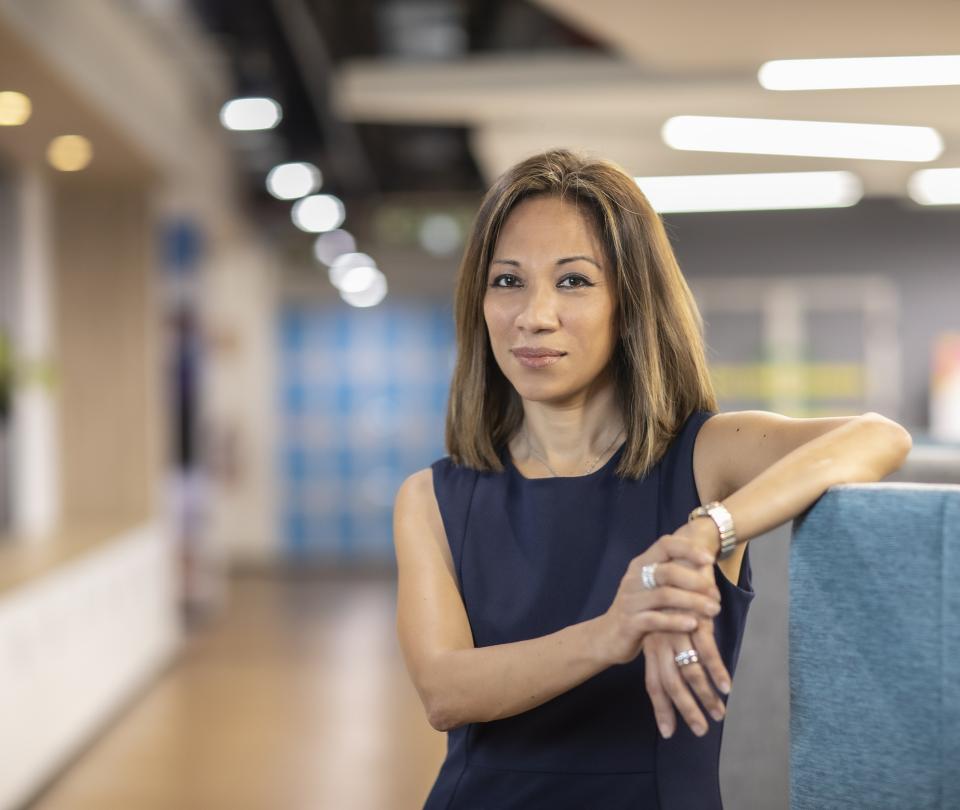Nancy Tueros She has been president of Mibanco for six months, an entity specializing in microcredit, which is part of the Peruvian financial group Credicorp.
She is an administrator and accountant from the Universidad del Pacífico, with a master’s degree in administrative sciences from the IESE Business School in Spain. She has worked for companies in the Credicorp Group for 26 years, and She is the first woman to hold the presidency of a company in the group.
(More: 63% of microentrepreneurs suffer financial instability, according to report).
How did 2024 begin for the bank?
The bank’s performance and strategic work plans have been in the works since last year and I have been supporting strategic initiatives in Peru and Colombia that allow us to have different results. We leverage ourselves on having centralized intelligence and this year we have already come out with our own microfinance models; the admission models are important. Here, being a closed bureau, unlike in Peru, it took us much longer to build these models. After two years collecting information from our clients, we came out with this model in February. We have our own admission models, and with the intelligence we develop, as a microfinance line, Mibanco Peru is the second largest microfinance institution in the world in terms of portfolio, so there is a lot to learn from them with the exportable microfinance model, with adaptations in other countries.
What strategies do they have?
One is the model and the other is the approach to increasing productivity, and last year we already had a significant reduction in terms of business advisors. This year, after we came out with modified models, with a tool that allows us to evaluate contact with the client, we began to hire more business advisors. Another relevant issue is the efficiency program. We prepared for a bank that could perform in other economic conditions. Last year was very complex, it was like the perfect storm: The cost of funding rose significantly due to macro reforms, there was also an issue of usury rates that affected the system and the portfolio deteriorated because there is a country that became complicated in economic terms.
(Read: JP Morgan warns of inflation and raises provisions).
What will this year be like?
With all these changes, we are seeing a better year. Last year we ended with losses of US$20 million and this year we hope to end at break even, without losses, and that is already an important recovery for us. We are building the technology platform that allows us to leverage the open data and open finance program promoted by the State and that seems powerful for the bank, since we are smaller. This is fundamental because it makes information available that would not be available as a bank alone. We have to put in place the means to leverage ourselves and enhance this possibility.
In addition to the CDT, where we are doing very well, we are launching Mujeres Pa’lante, which although it is a credit product, comes with Miraculous Savings
Microcredit brings financial inclusion…
We transform lives, but financial inclusion is not only about credit, not only about access: it is about use and quality in the services we provide. We see inclusion not only from the point of view of direct credits, but also all the services such as microinsurance for life and health.
In addition to the CDT, where we are doing very well, since Mibanco is the only microfinance institution that has a Triple A rating, we have the savings product and we are launching Mujeres Pa’lante, which although it is a credit product, comes in combination with a product called Ahorro Milagroso, which if it is fulfilled, the rate is reduced.
(See: Rate war: Is it a threat to inflation?).
What is the participation and how much weight does Mibanco’s portfolio have?
We have a 14% share in direct loans (although this still needs to be calibrated with the entry of Banco contactar) and a portfolio of $2.8 billion.
And what is the quality of that portfolio?
We ended 2023 with 8.2% and this year we hope to lower it to 6.9% or 7%.
And how does the credit portfolio behave in terms of gender?
I feel proud because there are a majority of women in the bank, as well as in the management level.
In terms of credit, there is also an issue that needs to be addressed in terms of aspects such as financial education and that is the amount of the loans, since women are granted less than men, as these are the criteria of the credit advisor, even if the ones who approve are women. It is like a kind of mental score (credit rating).
(More: Banks in Colombia that have announced a reduction in their interest rates).
Credit recovery has become more equal between the two genders, but women still remain the best payers of their obligations.
Holman Rodriguez Martinez
BRIEFCASE







![[Img #74676]](https://thelatestnews.world/wp-content/uploads/2024/12/Laser-artificial-neuron-150x150.jpg)





Add Comment